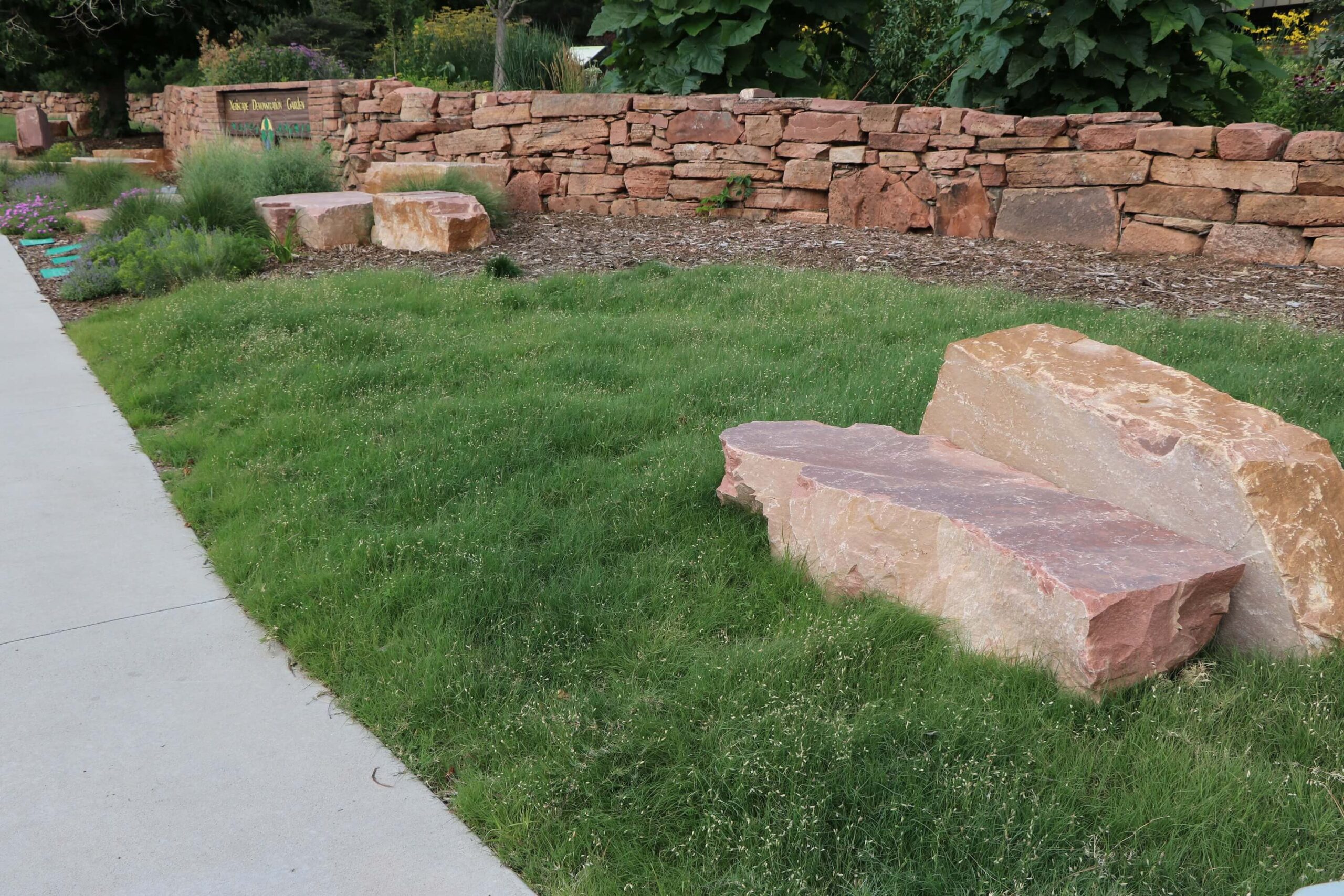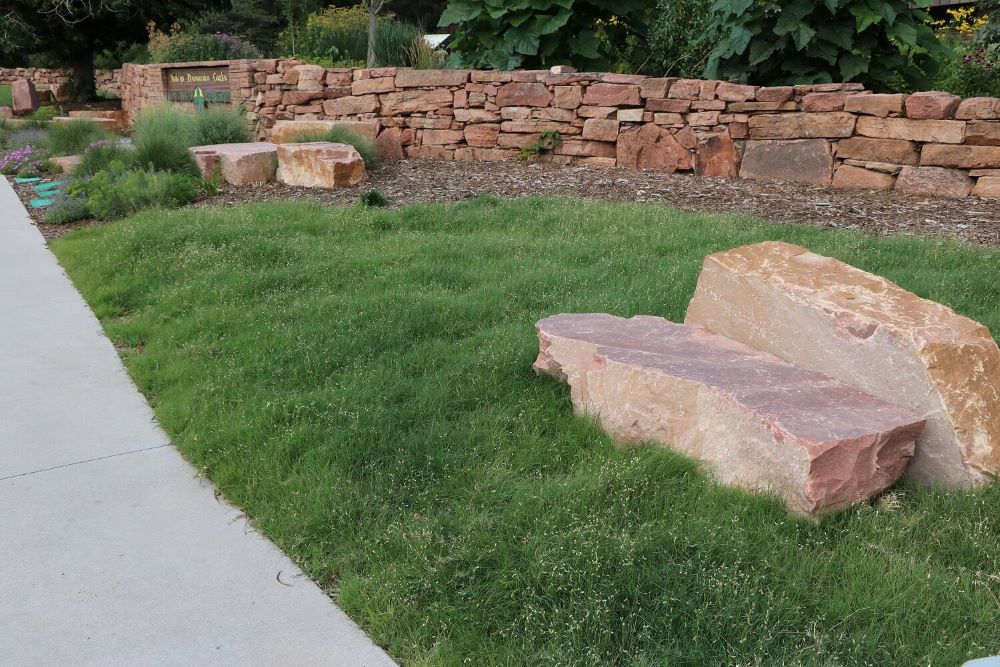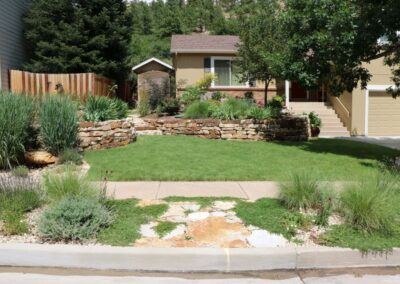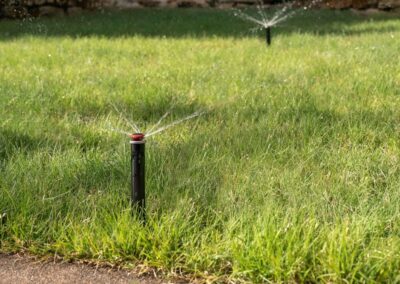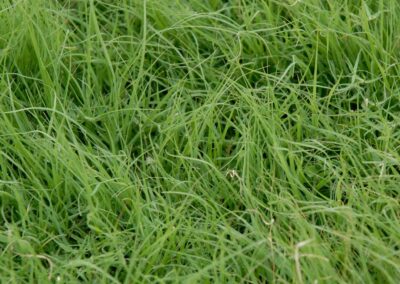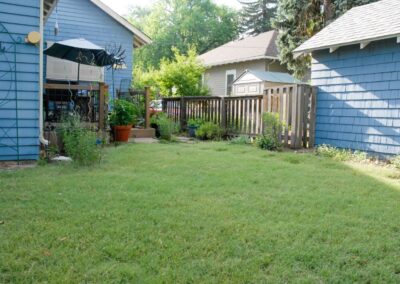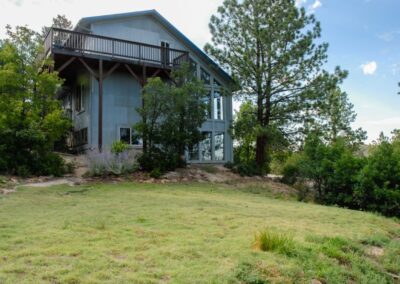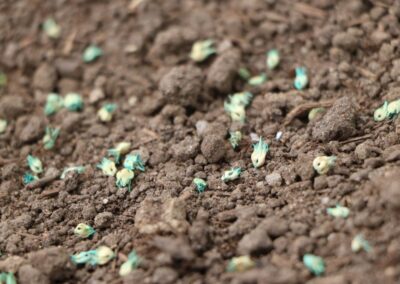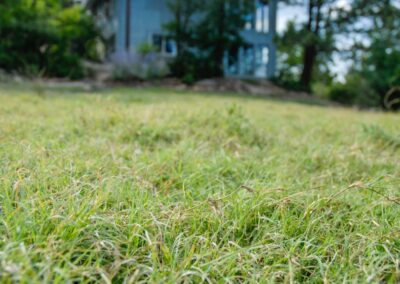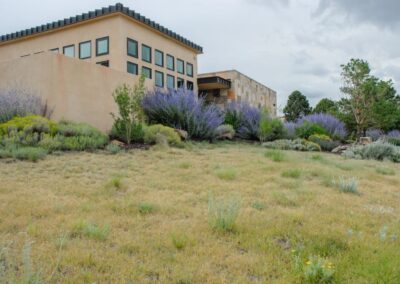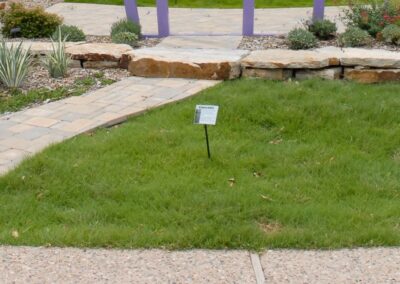Buffalo Grass
Bouteloua dactyloides
Buffalo grass is an excellent native grass option for lawn replacements, low-maintenance groundcover areas, and green infrastructure projects.
Active Growth
May-October
Light Needs
Full Sun
Origin
Native
Best For:
- Landscapes with full sun
- Low maintenance landscapes
- Achieving a traditional, lawn-like look (stays short and tolerates mowing)
- Areas that aren’t watered in winter
Not Suited For:
- Shady locations
- Areas under large trees
- Elevations above 6,800 feet
- Sandy, gravely, or well-drained soils
- Sports fields or repetitive use areas
Tolerates: Drought, slopes with full sun exposure, temporary flooding once established
Irrigation need (FRONT RANGE)
No Irrigation
Turf Irrigation
Water Use: Requires about ⅓ of the water of a traditional lawn. Water once per week or less, May to October
Using Buffalo Grass
Buffalo grass is an excellent choice where a short-growing grass is desired. It needs at least six hours of sun to thrive, and grows in areas up to 6,800 feet in elevation. This grass turns green later in spring (mid-May) and turns brown earlier in fall (early October) than a traditional lawn. It grows best on soils with some clay content, and will require more frequent watering if planted on sandy, rocky, or gravelly soils. Buffalo grass tolerates moderate foot traffic, but isn’t well-suited to high-elevation sites or recreation areas.
Buffalo Grass Attributes
- Provides a uniform and dense ground cover
- Spreads through stolons (above-ground runners)
- Warm-season grass, grows best in mid-summer
- Blue-green in color
- Leaf height of 3-6 inches and an overall height of 3-6 inches with seedheads
- Installed from seed or plugs
- Provides ecological benefits
- Does not tolerate salts, like roadway salts used for snow/ice removal, or pet urine
- Tolerates temporary flooding
Installing Buffalo Grass
- Installed by seed or plugs
- Ideal planting time is June 1 to July 31 when soil temperatures are 65 degrees or greater
- Use a cultivated variety (cultivar) for a greener color and more uniform growth habit
- Should be seeded at a depth of 0.25-0.50 inches
- Seeding rate for landscape projects is 3 lbs per 1,000 square feet of area
- Cultivars and notes:
- ‘Sundancer’ is a common, successfully used cultivar for seeding projects in Colorado landscapes
- ‘Prestige’ and ‘Legacy’ have proven to be cold-hardy cultivars installed as plugs
General
Buffalo grass is an excellent option for lawn replacements and works well in more manicured settings. It takes time to completely cover the ground, sometimes 2-3 years to achieve full density.
Weed Management
Proactive weed management during establishment is highly recommended and will result in healthy grass stands with minimal weed issues over time. Because buffalo grass is short, weeds can quickly grow taller than seedlings and delay grass establishment. Buffalo grass is tolerant to a variety of selective herbicides that will control weeds without harming the grass. For example, mesotrione has proven to be successful at managing weeds in buffalo grass stands.
Watering for Establishment
Buffalo grass often takes three weeks to germinate, and it’s important for uniform, successful germination that the soil is kept moist until seedlings emerge. In the first three weeks, keep the soil consistently moist but avoid runoff and pooling. In weeks four and five, moisten the soil daily to prevent new seedlings from dehydrating. Monitor soil moisture and fix any irrigation problems as quickly as possible to prevent seedlings from drying out and dying.
Fertilizer During Establishment
Fertilizing new seedling stands helps them grow quickly so that their leaves fully cover the soil. Apply a controlled-release or organic fertilizer at planting OR fertilize regularly with a very light dose of quickly available fertilizer. A light dose of fertilizer can be applied as often as weekly, but at a significantly lower rate than standard lawn fertilization. Apply 0.1-0.2 pounds of nitrogen per 1,000 square feet each time the area is fertilized during the establishment period. Do not fertilize after mid-August.
Mowing During Establishment
Buffalo grass stays short during the establishment phase and rarely needs mowing.
Long-Term Watering
Once established, buffalo grass needs 8-10 inches of supplemental irrigation or less per growing season. This means watering once per week or less from May to October, and not watering at all during the winter when the grass is dormant (brown). Once the grass has matured, schedule irrigation to meet your project goals and desired grass appearance. Overwatering results in increased weed competition and encourages cool-season grass invasion.
Mowing
Because buffalo grass is short, it doesn’t need to be mowed often. It’s more tolerant of mowing than most native grasses (which allows it to achieve a lawn-like appearance), but can be mowed six times per year or less—which presents the opportunity for significant maintenance savings.
Weed Control
Long-term weed control keeps grass healthy and attractive. Ideally, with proactive weed control early in the project, long-term weed control efforts can be minimal: spot-spraying troublesome plants. Do not use traditional lawn weed killers, including many “weed and feed” fertilizers, on buffalo grass. Pre-emergent weed control products can help prevent new weeds from growing—however, since they’ll also prevent new grass seed from germinating, only use them in established grass stands where you aren’t planning any overseeding or germination of additional grass seed. Identify the weed species appearing in the area and include specific weed-control strategies for those types of weeds. Only use products labeled as safe for buffalo grass.
Fertilizing
For areas where buffalo grass is used as a lawn replacement or a low-water groundcover, fertilize once or twice in June or July when the grass is growing rapidly. Apply nitrogen at 1 lb/1000 square feet of area. Low-input, naturalized, or restored areas do not need to be fertilized at all, but may be less dense and develop some spaces between plants over time.
Start your project
Discover how to plan and implement a native grass project for long-term success.
